Sustainability Category, sponsored by Skillnet Ireland
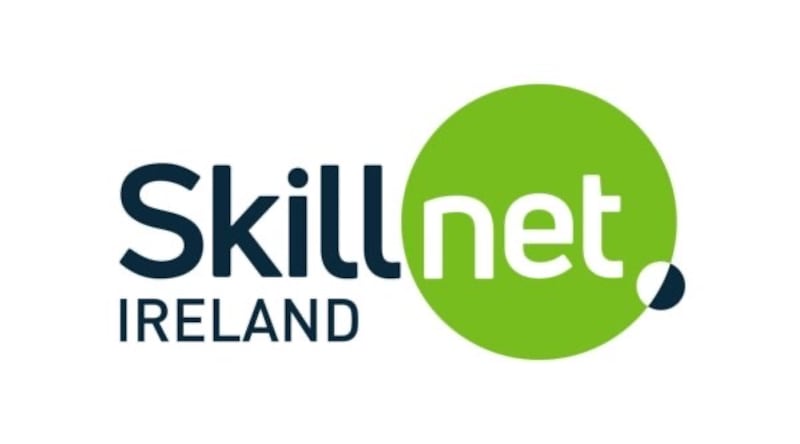
Future Planet
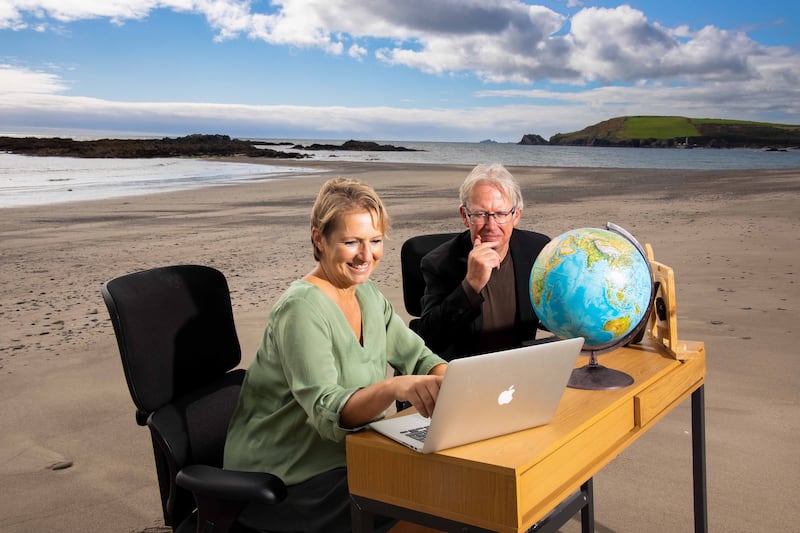
Future Planet offers corporate enterprises a software framework to help them become more sustainable.
Its product maps out what companies need to prioritise by informing them what their peers do, what legislation prescribes, what their customers’ needs are, and what their employees demand.
To do this, it uses in-depth knowledge of more than 2,500 frameworks, policies and scientific knowledge of ESG metrics and frameworks. The platform uses these and AI capabilities to guide enterprises through the challenges that arise.
It estimates “conservatively” that it will have a customer base of 100,000 companies spending an average of $100,000 in a market worth $10 billion in the next three years.
READ MORE
The company is run by Donal Daly, a technology entrepreneur who has founded five software companies. He works on improving human performance through the effective application of smart software. His companies have served more than one million users over 30 years.
Future Planet is currently focused on developing its global client base by extending its partner network through consulting organisations, trade associations, investment portfolio companies and legal firms.
It says its business decisions and growth plans are driven by how it can make the biggest impact on sustainability, helping to solve “one of the biggest challenges of this generation” in the form of climate change.
Teagasc
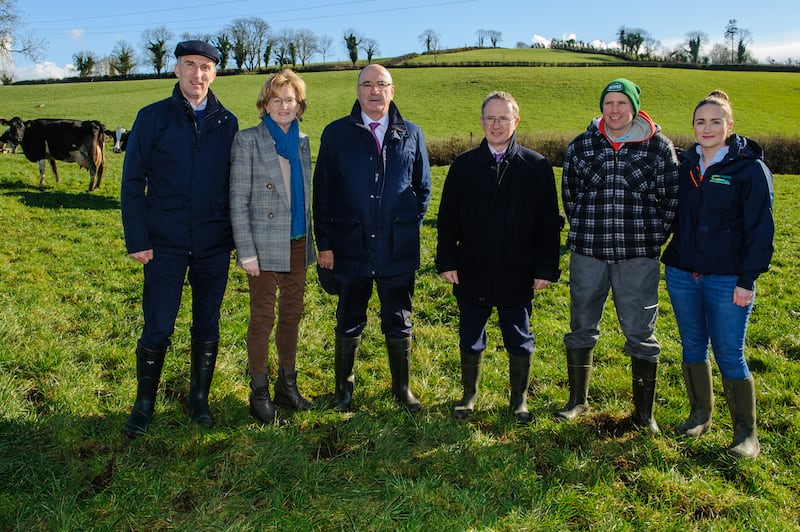
Teagasc’s “signpost programme” is a whole-of-industry partnership to support and enable farmers in climate action.
While the focus of the programme is to support farmers in reducing greenhouse gas emissions, it will also help with advice regarding improving water quality and enhancing biodiversity on Irish farms.
A network of 120 farmers has been established, and this network will play two roles. It will firstly be among the first to adopt climate mitigation technologies, and, secondly, will share experiences with other farmers.
This will occur through farm walks, events, articles, videos and the media. Demonstration farmers have been identified for all of the main farming enterprises, including dairy, suckler beef, dairy calf to beef, sheep, tillage, pigs and poultry.
Teagasc also proposes to establish a new, targeted advisory service focused on climate action and sustainability. This new service will provide training opportunities to enhance farmer knowledge and skills and facilitate farmer-to-farmer learning.
It will also offer targeted, follow-up, one-to-one support to farmers, leading to the creation of farm specific action plans. This will augment current advisory activities, and will be provided free-of-charge to all participating farmers. Teagasc expects to launch the service this year.
Silicate
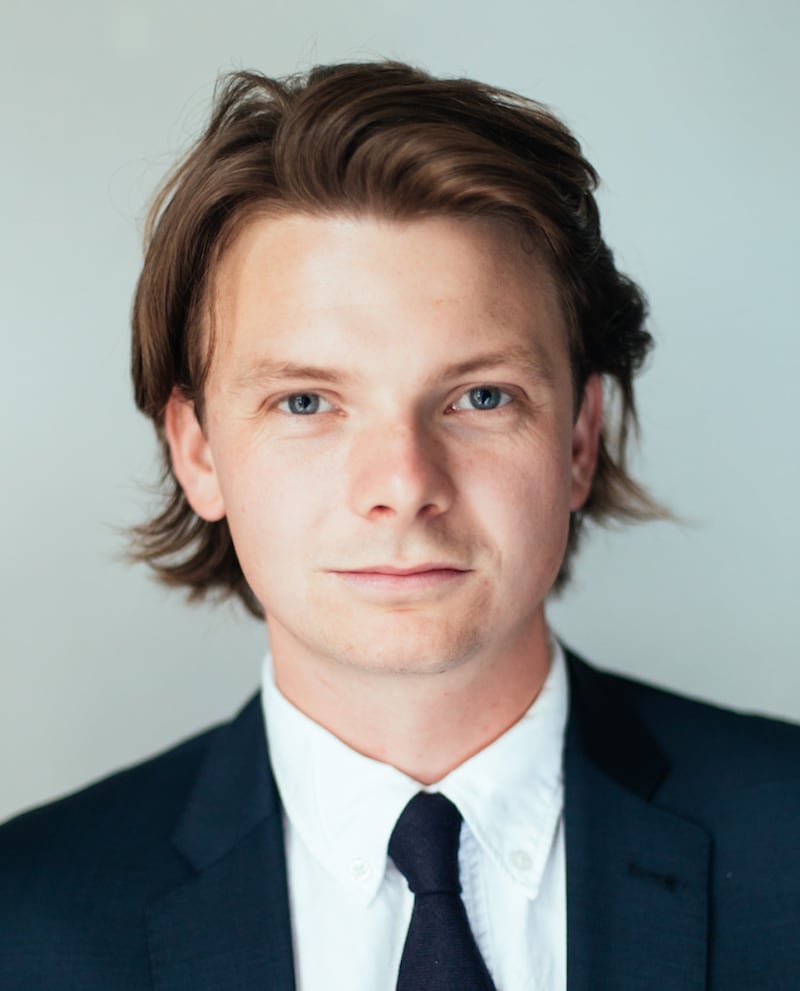
Silicate uses returned concrete to permanently remove carbon dioxide from the atmosphere. It helps large corporates to lower their greenhouse gas emissions by selling them premium carbon removal credits that it creates via its carbon removal process.
By accelerating a natural geological process – the weathering of silicate and hydroxide minerals – Silicate removes excess carbon dioxide from the atmosphere and stores it over geological timescales.
Silicate’s material replaces agricultural lime as a soil pH amendment. The weathering agent, which is derived from returned concrete, reacts with carbonic acid in the soil to remove atmospheric carbon dioxide, forming bicarbonate and calcite.
Its material removes carbon from the atmosphere, storing it in an inert state, and helps to reduce ocean acidification.
It says the material, which had previously been acknowledged by academics as having a high carbon storage potential, has yet to be used in a commercial carbon credit generation setting.
It says it is the first company in the world to commercialise this material as a carbon removal vehicle, which enables it to market itself as a leader in the carbon offsetting space.
It expects the demand for carbon credits to grow by a factor of 15 and be worth $50 billion by 2030.
First Time Founder, presented by The Irish Times
Class Medical

Class Medical has designed and implemented a quality safety tool for urinary catheterisation to prevent injury.
The most common catheter used has a balloon on the inner end which is inflated by the user once it has reached the bladder. As this is a blind procedure, accidental inflation of the balloon in the urethra can cause significant acute and long-term urethral injury.
Class Medical’s “safety valve” uses a pressure relief system to indicate inflation of the catheter’s balloon in the urethra to the healthcare professional. This allows them to remove and reposition the misplaced catheter.
The company estimates there are 9,000 injuries per year in the UK, at a cost of more than €81.6 million.
It says the healthcare costs associated with treating catheter balloon urethral injuries is approximately €10,000 per injury, and that the use of the device has saved the HSE between €220,000 and €750,000 this year.
The global urinary catheters’ market size was valued at $4.65 billion in 2020, and is expected to grow at 7 per cent a year from 2021-2028. Class Medical employs 10 people directly and subcontracts the manufacture of the device to another Irish company.
It has been used on more than 7,000 patients to date, and is estimated to have saved between 15 and 50 patients from severe injury in Ireland this year.
Imvizar
Imvizar has created new technology for use in augmented reality.
Almost all augmented reality experiences currently use two types of activation. The first is “tap to place”, which is where the user moves the phone in a circular motion until the ground is detected by the phone’s camera.
A marker appears on the ground, the user moves the phone until the object is placed where they want it and they tap the screen to lock the object to this location. They then pinch the screen to make the object bigger or smaller.
The second type of activation is image recognition, which is where a distinct image is detected by the phone’s camera and, using AR, the objects within the images move or change colour.
Imvizar uses a “markerless” technology called “point cloud” which scans a location in advance and produces a life-size 3D model. It says this is important both for how experiences are built and also how the user unlocks the experience while on location.
If there are multiple characters and multiple props within a scene, it builds the scene in advance so the user does not build the scene themselves.
The “tap to place” methodology is the current industry standard, but has proven problematic, as there is too much reliance on the user, and the experience rarely turns out as the designer had planned.
Roam Adventure Trailers
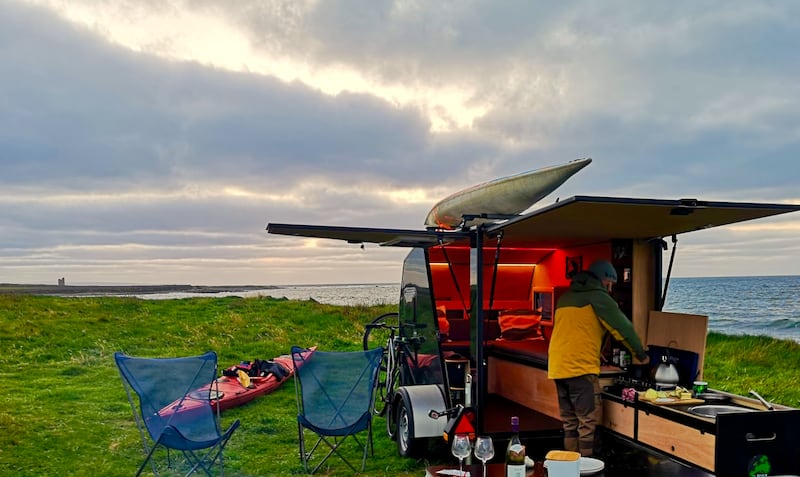
Roam Adventure Trailers manufactures miniature recreational vehicles. They weigh 598 kgs, measure 2.5 metres long and 15 metres wide, and can be towed by most cars.
They have seating for four people that converts into a large double bed. There is also the option of a roof tent to increase sleeping space, while a kitchen slides out from under the seating. There is also a full-size sink with running water included.
The vehicles cost €14,900. The company has initially launched in Ireland, but plans on targeting European markets, specifically Germany, in 2023.
It is forecasting demand for 100 units per annum for the 2023-24 financial year. Along with this, it is forecasting employment of five staff members within this time frame.
The company is aiming is to scale its business and, from ongoing customer engagement, design other models that suit different niche demographics.
It is also planning on integrating electric batteries into the chassis allowing greater range for electric vehicles. Ultimately, it is seeking to develop an Irish adventure brand that has the potential to reach worldwide markets.
Manufacturing and Design, presented by The Irish Times
HoloToyz
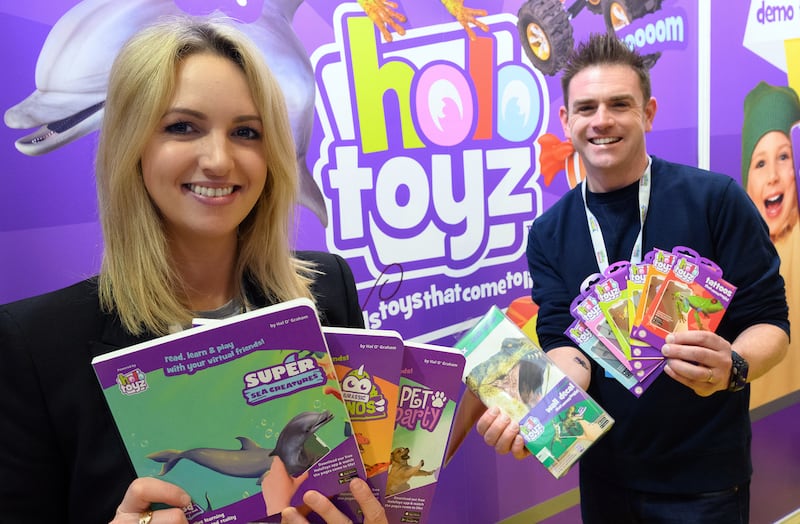
HoloToyz manufactures augmented reality products for children. It creates children’s books, wall decals, temporary tattoos, and stickers which, when scanned with its app, come to life in audio supported 3D animation.
The product aims to teach children about various subjects in an interactive and immersive way. It says thousands of children’s apps are available within the app store but offer a digital-only experience.
It seeks to bridge the gap between physical and digital components to allow children to engage, learn and have fun with their favourite characters and creatures through the use of new technologies that is not just limited to digital play.
The size of the global toy market was $104 billion in 2021. The global connected toys market size is expected to grow from $5.7 billion in 2019 to $13.8 billion by 2024, at a compound annual growth rate of 19.3 per cent during the forecast period.
The augmented reality market is estimated to grow from $10.7 billion in 2019 to $72.7 billion by 2024. It is expected to grow at a compound annual growth rate of 46.6 per cent from 2019 to 2024, the company says.
Lvlogics

Lvlogics has developed SiloSpi, which it describes as a low-cost, internet-connected silo monitoring system that captures data regarding the levels, humidity and temperature within a silo.
Traditional products can cost in the region of €4,000 to purchase, install and connect to the internet.
The Lvlogics system essentially provides online levels of materials in silos to users and their suppliers to enable sustainable deliveries of meal/raw material. These levels are provided to users via an online platform and phone app.
Email and SMS alerts can be sent to users and/or the meal supplier at pre-determined levels to ensure that users never run out of materials.
Lvlogics uses a laser sensor that takes the height of material in a silo. Up to now, these low-cost sensors could not be used in silos, due to the harsh and dusty environment that exists inside them.
Over time, dust causes other sensor-based solutions to clog up and become inaccurate. Lvlogics has developed a two-step patented mechanism that can detect when the sensor has dusted up, and can then clean and remove the dust if necessary.
It estimates that €2 billion is wasted globally due to inefficient delivery of animal feed.
WrxFlo

WrxFlo, which was founded in 2019, creates dashboards to give its customers access to all their data in real-time, and to help them to solve problems they are facing throughout their supply chain.
It does this by connecting their operations and management systems, and presenting visualised data in dashboards that are accessible anywhere in the world.
The company says replacing enterprise resource planning systems can be very costly and disruptive for businesses, and its product is designed to alleviate these needs.
It implements automated real-time time reporting of key metrics, material availability for orders as they drop to the factory, part shortages that need to be ordered by procurement, and the status of shop orders and parts needed to fulfil customer orders.
While its main clients are multinationals, it works with firms across the globe including in the US, Europe and China, in a range of sectors from medium-sized business to large-scale.
The product is aimed at companies across all manufacturing sectors. The company is currently seeking to build a global presence, with a particular focus on Asia, where it hopes to capture 0.3 per cent of the market in five years.


















